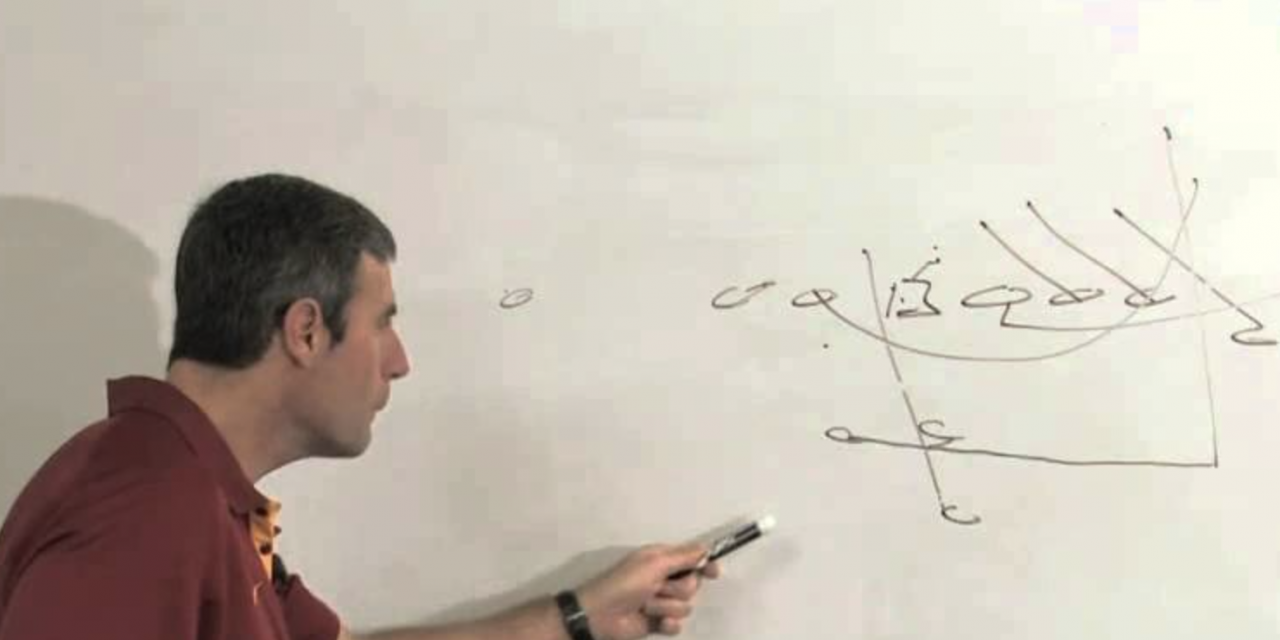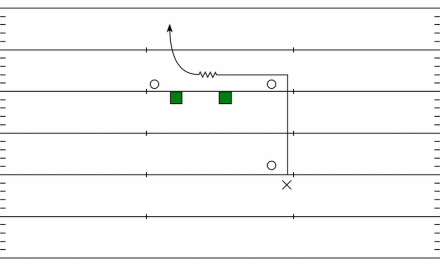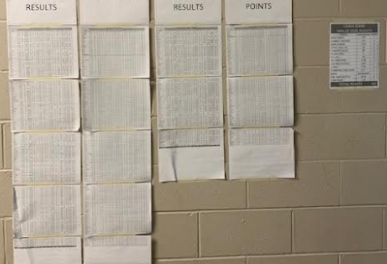Earlier this spring I wrote an article about running the Wing T Buck Sweep from 11 personnel.
I got a lot of great questions and comments about how we do it, as well as questions about what this Gus Malzahn video so greatly explains about running this play from a 1-back set.
That being said, there were also many comments from Wing-T coaches about the play not actually being Buck Sweep due to the fact that there is no fullback holding the inside linebackers.
As a matter of fact, you are right about that.
So I am writing a letter to the Wing T Coaches as a follow up to the article.
Dear Wing-T Coaches,
I greatly appreciate your passion for the offense and am happy it is still being run. In my early years of coaching, the majority of the teams we played against ran the Wing-T, and many of those weeks there was nothing we could do to stop them. And most likely due to that experience, in my current position, we use many Wing-T ideas within our offense that have been great for us.
That being said, I believe, as Gus Malzahn shows, that you can also gain a lot from spread offense ideas within your offense to allow you to spread the field, throw the ball more to your better athletes, and still run the plays that have brought you success for years.
All offenses are having to adjust to the current state of needing to score more than 30 points to win games, and I believe people on both sides of the Wing-T argument can get a lot from this article, as well as the previous article.
With this being Part 2 of the Buck Sweep from 11 personnel series, we are going to discuss some really neat ideas you can use that tie the Wing-T Buck Sweep to the current spread offense ideas (Figure 1) of using the tailback on both sides of the quarterback in gun, the quarterback reading multiple defenders, being able to keep the ball or have run-pass-options, using jet-action, using play-action, and my favorite, using the quarterback in the run game.
I’ll start conservatively and then proceed more and more outside the box as we transition through the article.
THE HORN PLAY
This is a great place to begin moving from a basic Wing-T set but still run the closest thing you can to Buck Sweep. (Figure 2)
In this play, everyone will run the basic scheme, but instead of the running back being on the opposite side of the quarterback, he will align on the play side.
On the snap of the ball, the running back will move toward the quarterback as if he is running to the opposite side, take the ball, and run the called direction of the play. This gives coordinators the fullback-buck piece that holds the inside linebackers, while also being able to run it from their preferred set. It’s not completely traditional, but it is much closer to how it was intended to be run from a Wing-T set, which may help you get out of your comfort zone and try something new.
If you are interested, this video shows how to run it from Pistol Formation (running back behind the quarterback).
That being said, if you are a team that is going to use multiple reads with your quarterback (meaning, other than inside zone), I would recommend running it from the gun (next to the quarterback).
QUARTERBACK LEAD
Using your quarterback in the run game, no matter what offense you use, always erases one defender. It either gets a defender out of the box, gets a defender out of the play as a read, or in this instance leads the running back on the defender to get an extra blocker. When running Buck Lead (Figure 3), you get to have the same incredible blocking scheme on the perimeter, with another blocker.
And with many current offenses using their best athletes at quarterback, you now have a quarterback run that does not get him hit by defensive lineman.
WIDE RECEIVER BUCK SWEEP
Though this does not have the fullback holding interior defenders, this is play that is most like the Wing-T Buck in terms of the type of player getting the ball (Figure 4). You can use a similar jet-action as you do with your jet sweep, but make sure you snap the ball earlier than you do on a regular jet sweep. You have to slow this down so you can get both guards pulling out in front of the receiver running the sweep.
Why run this play? It’s another change-up in your offense to get other players the ball, while still using a very dangerous and sound scheme.
BUCK POP
I usually do not like to put videos in these so our opponents cannot see everything we do, but this one is one of my favorites and needs to be shared if you are going to begin running this play from a more spread-out personnel package.
The pop-pass or play-action off of Buck (Figure 5) is a great change-up, as the defense must react quickly and horizontally if they are going to stop the sweep. Couple that with the fact that the crack block from the slot receiver is one of, if not the, most important of all of this play’s blocks, the pop-pass off of Spread Buck is it’s best counter beside running Power.
Concerning the routes, make sure all of your non-pop receivers run outside release Go Routes. This will ensure that the backside corner is not involved in the play. Concerning the slot receiver, release somewhat lazily and discuss showing hands. Within the game he may be in too much of a hurry, but I would still teach it this way at the onset of instruction. Once the linebacker begins to move sideways or take his eyes off of the receiver, he is free to get into his route.
One thing we learned is to not get too deep. The Will linebacker is surprisingly less likely to get hands on this ball than you would think, and we do not want to get the free-safety involved.
All other players will use their basic blocking rules without going downfield, while the playside guard must stay home just in case there is an A gap blitz. That would definitely blow-up the play.
QUARTERBACK READ
My favorite portion of this article is the quarterback read (Figure 6). One of the issues with running Buck out of 11 personnel, is that you cannot pull both guards if you get an Under front, which is a one technique defensive lineman to the playside. But, one idea we had to allow us to run Buck with two pulling guards no matter what, is to read the Nose. Whether he is in a one technique or zero technique, if he sits in his gap you can give it. But, if he chases like most unblocked defenders do, the blocking scheme is already set up to allow the quarterback to run through the playside A-gap. Again, another perfect example of a running quarterback erasing a defender.
One point of importance is to make sure you begin the game giving by it to your tailback, until you see what the Mike linebacker does. Most Mike linebackers will fly out of the middle of the field and chase the pulling guards. Once you see that, you can begin calling the read. If the Mike linebacker stays in the middle, then it does not matter, because you will be able to run Buck every play for the remainder of the game.
QUARTERBACK LEAD PASS
Since we’re talking about new ideas, we have to throw-in a trick play. And the great thing about this one is that it already connects to one of the simpler plays listed above. The trick play is a pass off of the quarterback lead (Figure 7). Simply run the exact same play you would run in quarterback lead, but like the play-action rules we discussed above, the play-side guard needs to block down to stop an A-gap linebacker blitz. The remaining lineman only need to know not to pass the line of scrimmage.
Be certain you have your receivers taking the same path they would when they block, otherwise the safeties will notice something is different and begin to back-pedal. I would also suggest releasing with whatever blocking body language you see your receivers using on film, so the pass play looks as much like the run play as possible. Once the defensive backs believe it is a run play and take their eyes off of the receivers, get directly upfield as fast as you can run.
CONCLUSION TO THE WING T BUCK SWEEP
I hope this article helps you all in your own way. For Wing-T coaches, see if you can spread things out and get your guys in space, or more importantly, get defenders out of the box. Using slight adjustments can allow you to run similar plays out of different formations, which if you talk to defensive coordinators, is one of the top things on their list that keeps them up at night.
And for non-Wing-T coaches, there are so many amazing things within the Wing-T system that you can add to your offense, no matter what personnel packages or base plays you use. I urge you all to look into these things, including the previous article, and add these run game-enhancing ideas into your offense.





